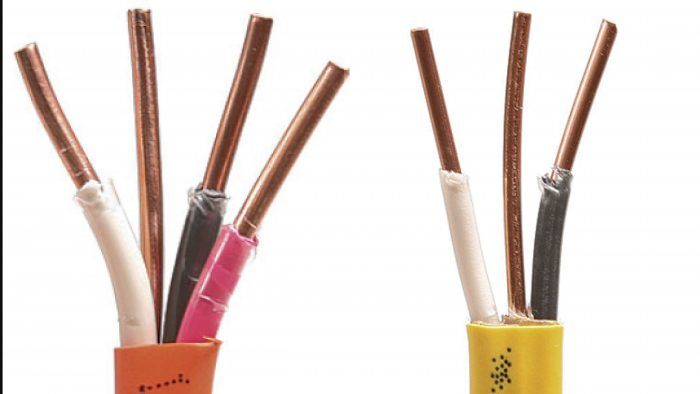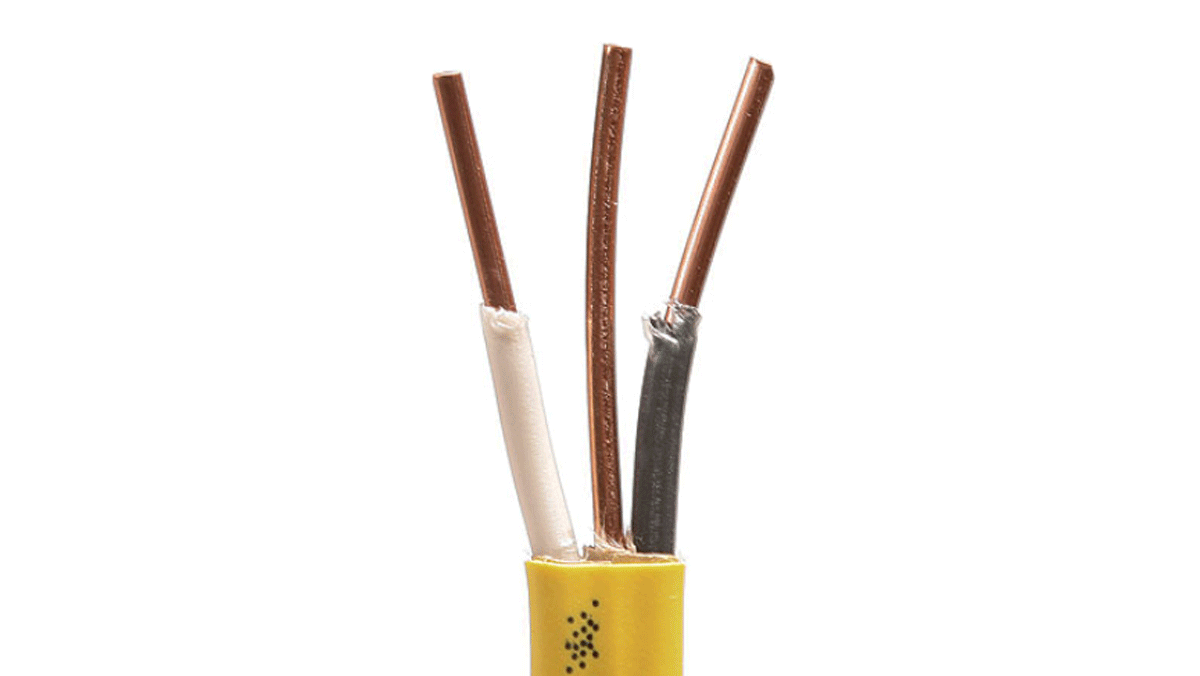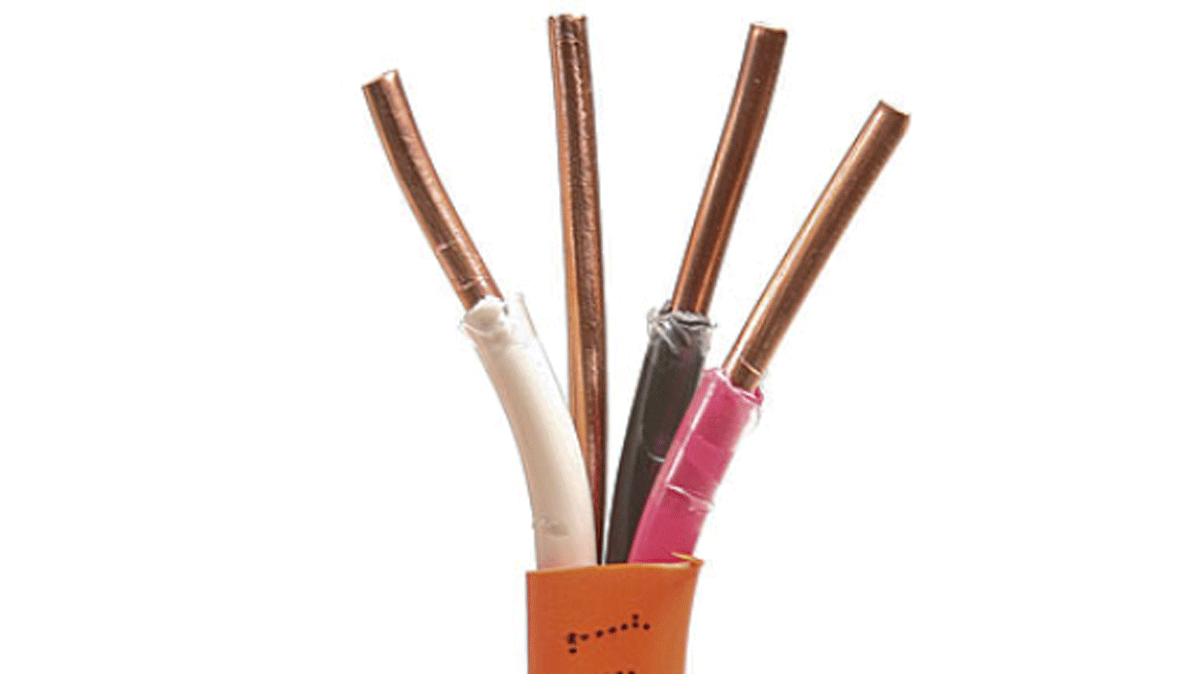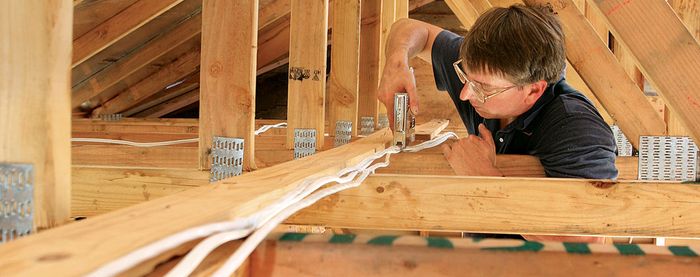Nonmetallic Sheathed Cable
Learn the basics about this common style of house-wiring cable.

You may know it as Romex—which is just a brand name—or house wire, but nonmetallic sheathed cable (NM) has become a mainstay of residential wiring since it became available almost a century ago. NM is a quick, easy way to get power where you want it, and it’s relatively cheap compared to other methods of wiring. NM has evolved from a braided-fabric outer jacket surrounding two conductors (no ground wire) into the color-coded, plastic-jacketed, multi-conductor cable assembly we use today. Even with the emergence of color-coded jackets and the widespread availability of home-wiring how-to books, there is still some confusion on what size wire is appropriate for different applications.

Like other multi-conductor cable assemblies, NM contains several insulated conductors housed in an outer jacket in a variety of configurations. The most common gauges include 14-, 12-, and 10-AWG solid copper in two- and three-wire configurations. NM is usually labeled by the gauge of the conductors and the number of conductors in the assembly. Regardless of the manufacturer, a label includes the wire gauge and the number of insulated wires. For instance, 12/2 NM has two insulated 12-AWG conductors housed in the outer jacket along with an uninsulated ground.
All NM now has an integrated bare ground wire that usually is excluded from the description on the package. The versions of NM you’ll most commonly need are a two-wire version for constructing basic circuits and a three-wire version three-way and four-way switches, switched receptacles, or a bath or ceiling fan with separate switches for the fan and light.
Because NM is generally used for wiring one- and two-family dwellings, the stock available at your local supplier likely has the most common wire gauges and configurations for residential circuits. Lighting and receptacle circuits in single-family dwellings have a maximum circuit capacity of 15 or 20 amps, which require 14-AWG or 12-AWG conductors respectively, but most stores are likely to carry 10 AWG and even some larger gauges. The heavier 10-AWG wire is typically used for water heaters, AC compressors, and electric clothes dryers. It’s generally paired with a 30-amp circuit breaker.

Using the correct wire gauge is crucial to managing the heat produced by the electricity in the circuit. Each wire gauge is designed for a maximum amount of current. Using undersized wire is a fire hazard. You can always use a bigger wire than the code-required minimum, but you’ll pay for it. For example, a 50-ft. roll of 10/2 costs about twice as much as a roll of 12/2 and almost three times as much as a roll of 14/2.
Most NM these days has a color-coded outer jacket: white for 14 AWG, yellow for 12 AWG, and orange for 10 AWG. This color-coding makes identification of new wiring easy, but it can lead to some confusion in older homes if you don’t pay close attention to the existing wiring. I often find DIY-style wiring that has tapped into 12-AWG/20-amp circuits (which was encased in a white outer jacket for a period of time) with new 14-AWG/15-amp wiring.
Other mistakes made with NM are the result of using it in an application for which it is neither designed nor approved. Some of the more common errors are installing it outdoors, leaving it exposed to sunlight, and running it underground. For these places, UF-B is usually the best cable to use. Similar in construction and configuration to NM, UF-B is UV-resistant and can be run outdoors as well as directly buried in some applications.
If your house has been around for a while, it’s probably worth the time to make a careful inspection of the wiring and the main panel. In the panel, look for melted wires, mismatched breakers, and signs of corrosion. If the system uses old-fashioned fuses, make sure there are no coins or slugs behind any of the fuses.
Photos: Rodney Diaz
More about wiring:
Wiring in Old Walls — Running new wiring in old walls typically requires a fish tape. Here are a few tricks that make this job a little easier.
Rough Electrical Wiring — To make wiring standard receptacles and light circuits simpler, start by understanding the code and take advantage of a few tips from master electrician Clifford Popejoy.
Wiring Your House for Today and Tomorrow — Structured wiring can link phones, computers, and televisions for better high-speed internet connections and audio/video signals.
9 Common Wiring Mistakes and Code Violations — Some are illegal, some are dangerous, and some are both. But all are simple to avoid.
Wiring a Subpanel — Even if you’ve had some experience with household wiring, adding a subpanel in a garage or workshop may be new. Andy Engel explains how to get started.
From Fine Homebuilding #229





